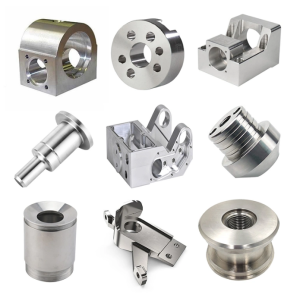
High-speed milling is not a new technology, and has been used in many industries, for example, the mold and die manufacturing industry has been used for decades. In recent years, aluminum alloy is the most widely used non-ferrous metal material, aluminum alloy industry has developed into a relatively mature market, aluminum alloy CNC machining and high-speed milling will collide with what kind of spark when they meet?
CNC High Speed Milled Aluminum Application
1. Conceptualization
In the 1990s, the development of High Speed Milling (HSM) focused on the overall concept, including the creation of machines with spindle speeds of 200,000 rpm. High spindle speeds and high feed rates were highly emphasized. Research organizations have shown that high speeds can have serious consequences and high risks when the tool or machine part is not matched to the application.
2. Optimizing the application
The main factors to be considered are: milling forces, surface texture, metal removal rate, tool life and safety. These studies prove the importance of optimizing the milling coefficients for high speeds. Thanks to the research and development of machine tool manufacturers, software developers, milling cutter manufacturers and high-speed milling, there is now a wider range of applications. What’s more, the actual process of high-speed milling is not only theoretical, but has been applied in all aspects of the shop floor.
3.Innovative Milling Tools
The development of innovative milling tools has made high-speed milling a more practical and profitable method in the mold manufacturing industry. Any milling processing rules, including high-speed milling, have the same effect as machine tools, software and milling tools. Over the years of practical application, the development of tools in high speed milling has moved towards higher performance.
CNC High Speed Milled Aluminum Application
For high-speed milling and indexable inserts, safe insert fixation is a top priority. Increasing spindle speeds and table feed speeds on milling machines, especially during aluminum milling, lead to high centrifugal forces and generate high loads on the insert mounting elements.
The CoroMill 790 indexable end mill is primarily used for high-speed machining processes such as cavity milling, edge milling, slot milling and contouring in mold and die making. Fixation of the insert is achieved by means of a specially developed insert interface. The design of the serrated contact surfaces on the bottom surface of the insert flutes and on the back of the inserts not only significantly increases the safety of high-speed milling, but also ensures machining accuracy.
The serrated contact surface design of the CoroMill 790 end mill can also be used for a wide range of flat surface milling applications in aluminum machining, especially for cast aluminum parts, such as molds, engine blocks, transmission housings, and so on. From semi-finishing to ultra-finishing, the positive rake angle of the CoroMill 790 end mill can be made of cemented carbide, polycrystalline diamond (PCD) or cubic boron nitride (CBN) when milling at speeds of up to 8000 m/min. This design makes the milling cutter widely applicable to aluminum alloy milling and even cast iron milling. The high-tech CoroMill 790 end mill has an uncomplicated structure, with simple and easy insert axial adjustment, and offers the advantages of balanced milling forces, a wide range of applications and precise machining allowances.
Uniform force on the inserts makes the machining process smoother and safer and extends the tool life. The above design greatly improves the milling quality and increases the machining capacity.
CNC High Speed Milled Aluminum Application
The proportion of aluminum alloys used in automotive manufacturing is gradually increasing. Currently, the Jaguar long-wheelbase version of the XF is increasingly being used with aluminum alloys. The car claims to be 75% aluminum, except for the four exterior doors, which are made of steel, and all other parts of the body are aluminum. So, what parts of the car do you know where aluminum can be used?
First – the wheels. Today’s wheels are basically made of aluminum. If a car doesn’t have aluminum wheels, then it was probably manufactured more than a decade ago or it’s just a cheap car. Aluminum wheels have a very noticeable effect in reducing the fuel consumption of a car, and car wheels are primarily 6061 aluminum alloy. (AL 6061)
Secondly, each car has four doors and two covers. The “two lids” are the hood and the trunk lid, which are easily damaged parts of the body. The aluminum alloy used in the “four doors and two lids” is aluminum 5182 (AL 5182). Because 5182 aluminum sheet has excellent


